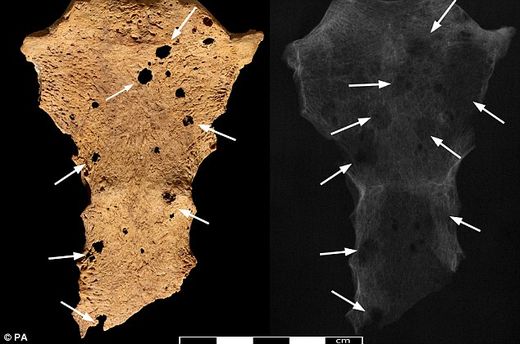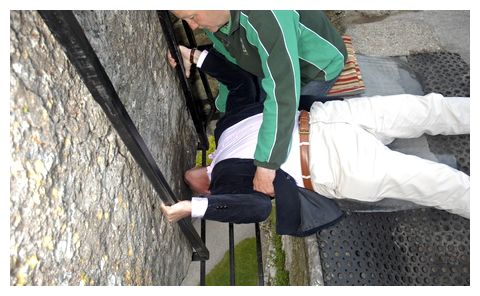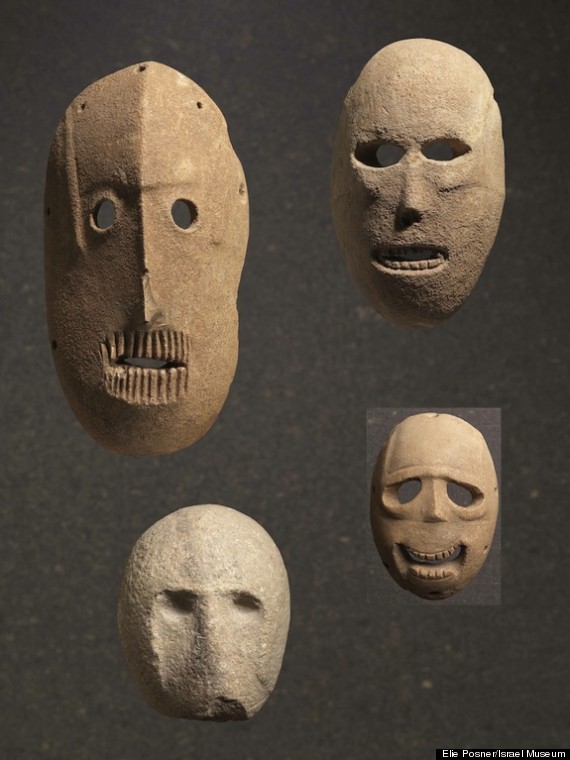
© Press AssociationThe sternum of the skeleton, believed to have belonged to a man aged between 25 and 35, pictured, shows evidence of cancer, highlighted by the arrows
British archaeologists have found what they say is the world's oldest complete example of a human being with metastatic cancer and hope it will offer new clues about the now common and often fatal disease.
Researchers from Durham University and the British Museum discovered the evidence of tumors that had developed and spread throughout the body in a 3,000-year-old skeleton found in a tomb in modern Sudan in 2013.
Analyzing the skeleton using radiography and a scanning electron microscope, they managed to get clear imaging of lesions on the bones which showed the cancer had spread to cause tumors on the collar bones, shoulder blades, upper arms, vertebrae, ribs, pelvis and thigh bones.
"Insights gained from archaeological human remains like these can really help us to understand the evolution and history of modern diseases," said Michaela Binder, a Durham PhD student who led the research and excavated and examined the skeleton.
"Our analysis showed that the shape of the small lesions on the bones can only have been caused by a soft tissue cancer ... though the exact origin is impossible to determine through the bones alone."
Despite being one of the world's leading causes of death today, cancer is virtually absent in archaeological records compared to other diseases - and that has given rise to the idea that cancers are mainly attributable to modern lifestyles and to people living for longer.





Comment: For more information on Baillie's research, see:
New Light on the Black Death: The Cosmic Connection
Justinian Plague and Black death: Review of evidence for comet impact in 536 AD